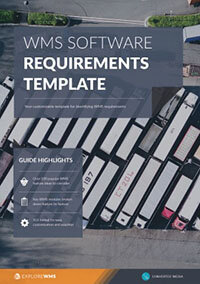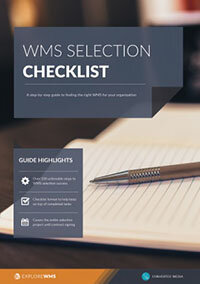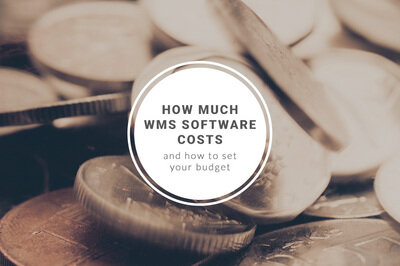Six key features to look for in a 3PL WMS
As 2016 ends, it seems like the list of WMS providers has grown longer than anyone can reasonably handle. Some systems consist only of modules to track inventory while others range from smart outbound control to full integration with CRM and ERP tools.
For 3PLs, the WMS is a lifeline, and its capabilities can make or break a business, especially when a customer calls. To help our 3PL readers, we’ve put together a quick look at six of the features that any 3PL WMS should contain beyond the baseline inbound and outbound controls and yard management.
1. Full inbound control
Like any traditional WMS, the systems for 3PLs need to focus on core functionality above all else. This means you need robust crossdocking support, the ability to schedule dock door appointments, performance scoring for vendors and carriers, monitoring flow-through, and the ability to monitor and process returns.
A powerful 3PL WMS will include auditing and quality inspections throughout, and you’ll be best served by a system that automatically generates your audit and QA documentation. Platforms should make your audits easy to view, analyze, and share so you can improve your processes and keep clients happy.
2. Enhanced track and trace
A 3PL WMS is a customer service tool as much as it is a business management tool. When customers call wanting to know where their goods are, your WMS should be able to provide that answer. You don’t want any knowledge or visibility gaps in your logistics WMS.
Get over 120 feature ideas for new software with this comprehensive WMS requirements template
Start with the ability to track and trace by SKU, UPC, serial number, batch, lot, packages, and parts/components. Refine the list based on your industry and your current clients. It’s typically a good idea to ask for support for micro-level tracking that you don’t initially need because that level of control may help you win clients down the road.
3. Simple customer onboarding
Software shouldn’t get in the way of gaining new customers. Your logistics WMS should be built on a workflow to help you optimize new processes, the most important of which is onboarding a new customer.
Each customer will have some customizations and notes that must be managed, so a 3PL WMS needs the brainpower to adapt to those needs and governance requirements. Workflows allow staff to make changes to process management and can ensure adherence to rules persist through upgrades.
4. Advanced billing and reports
The warehouse plays a significant role in your profit and loss, so you need a robust reporting aspect for your logistics WMS. When it comes to billing, you want a system that can support unique billing items and multiple invoice formats.
You should also look for a system that simplifies both the billing and reporting process. Drag-and-drop elements can make your 3PL WMS easy to operate for your team and easy for managers to use to generate reports. Seek out low to no coding requirements for these common functions.
5. Custom label creation support
Not every customer comes to the table with their own labels, and there’s a chance that any customer could need a new label when changing how their goods are packaged.
Any 3PL WMS needs the ability to create customer-specific labels and custom labels for tracking on a granular level. If this data is shareable, you can assist customers with their own tracking data, creating a simple but compelling reason to continue working with you.
6. Multiple device and portal support
3PL WMS need to share as much information with as many people as possible. To facilitate this sharing, seek a platform that has multiple access points such as the software on your PCs, an online portal, and apps.
Device support should extend beyond desktops and laptops to today’s smartphones and tablets, as well as all of the scanners and tracking equipment you use. BYOD policies mean smartphones are always on your floor, and now they may be as important a control piece as RFID reader or barcode scanner support.
These are just a few of the advanced features to look for in your logistics WMS. Let us know below if you have other must-haves for your 3PL WMS.
Free white paper

WMS requirements template
Over 120 WMS feature ideas to help you build a requirements list and shortlist vendors

Featured white papers
-

-

-

WMS requirements template
Over 120 WMS feature ideas to help you build a requirements list and shortlist vendors
Download
Related articles
-

How much WMS software costs and how to set your budget
A complete guide to WMS costs, and how to calculate your budget based on these
-

Mission-critical features of food lot traceability software
What features of food traceability software will help you during a food recall
-

Your complete WMS features and requirements guide
How to gather requirements for a new WMS, and features to look for to meet them

